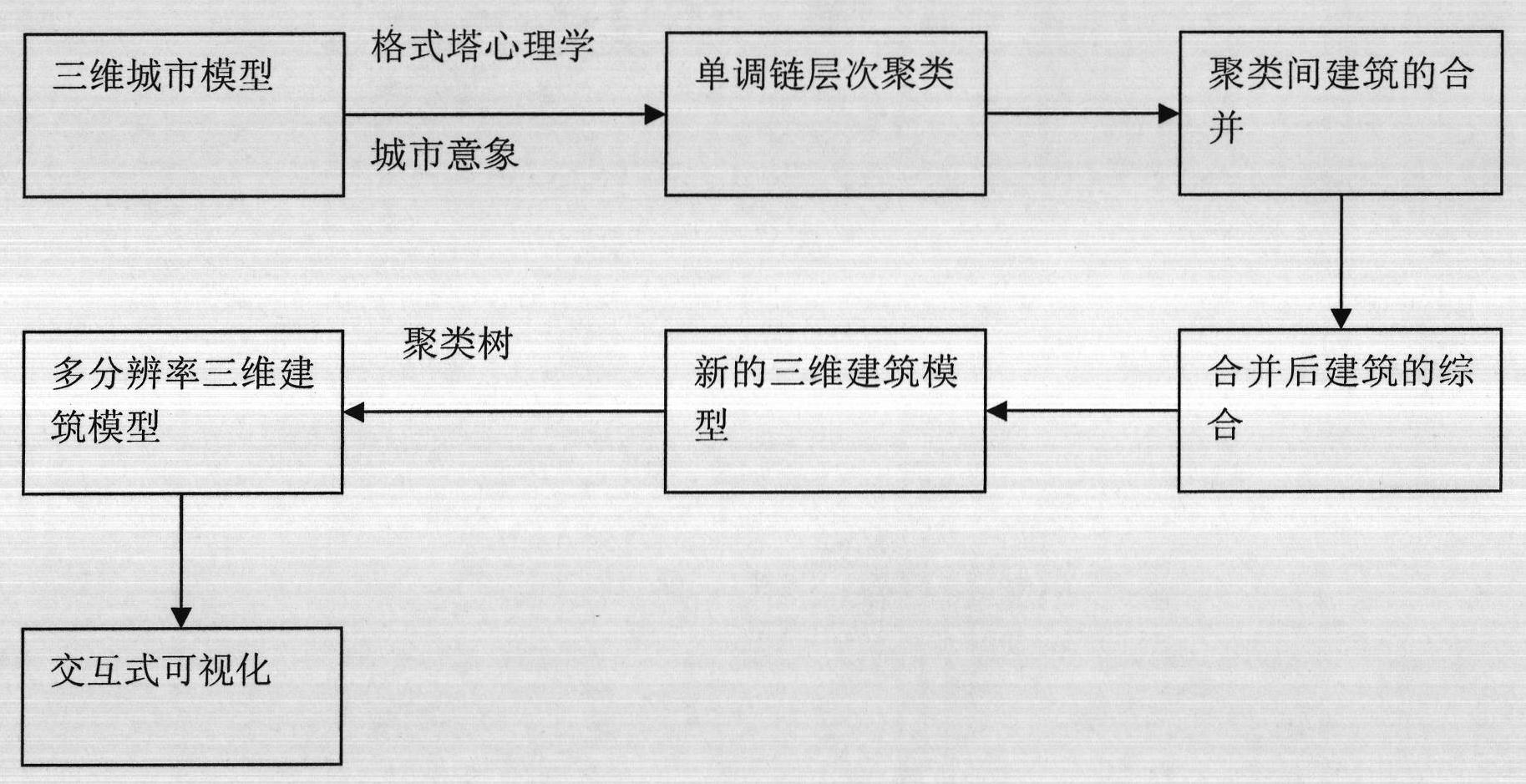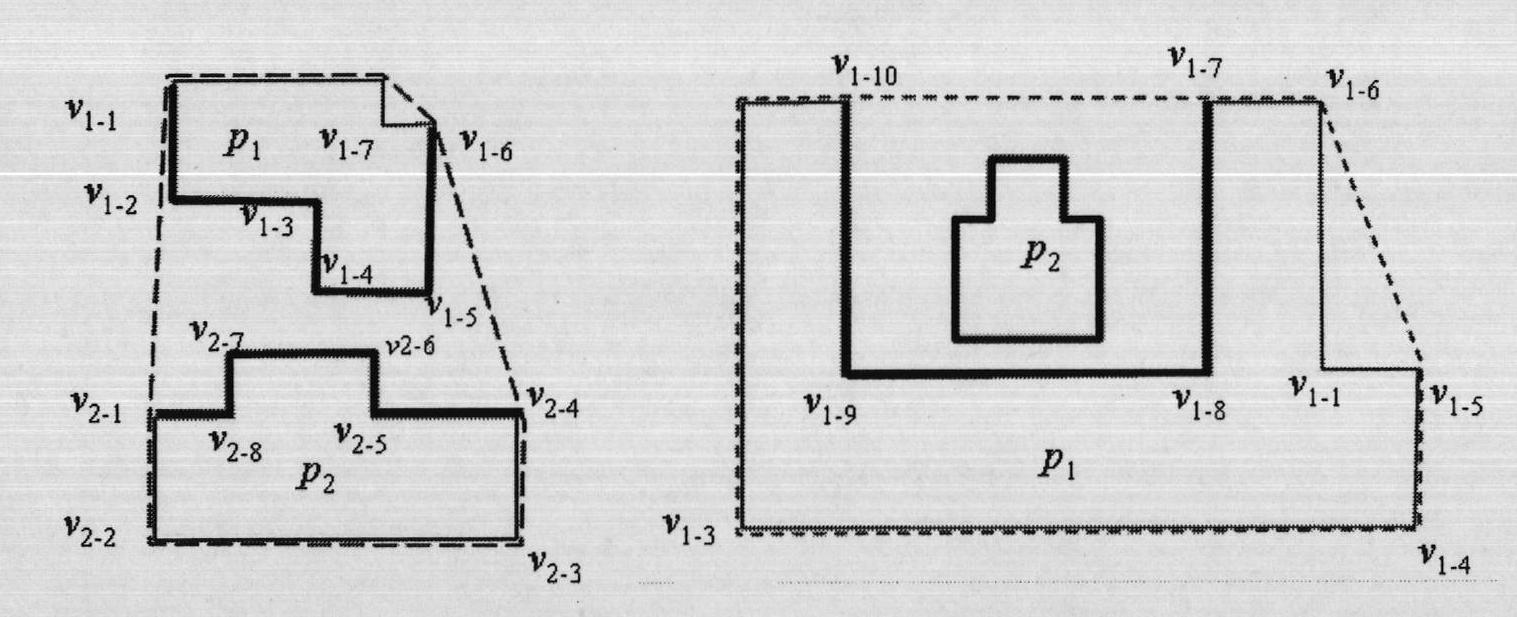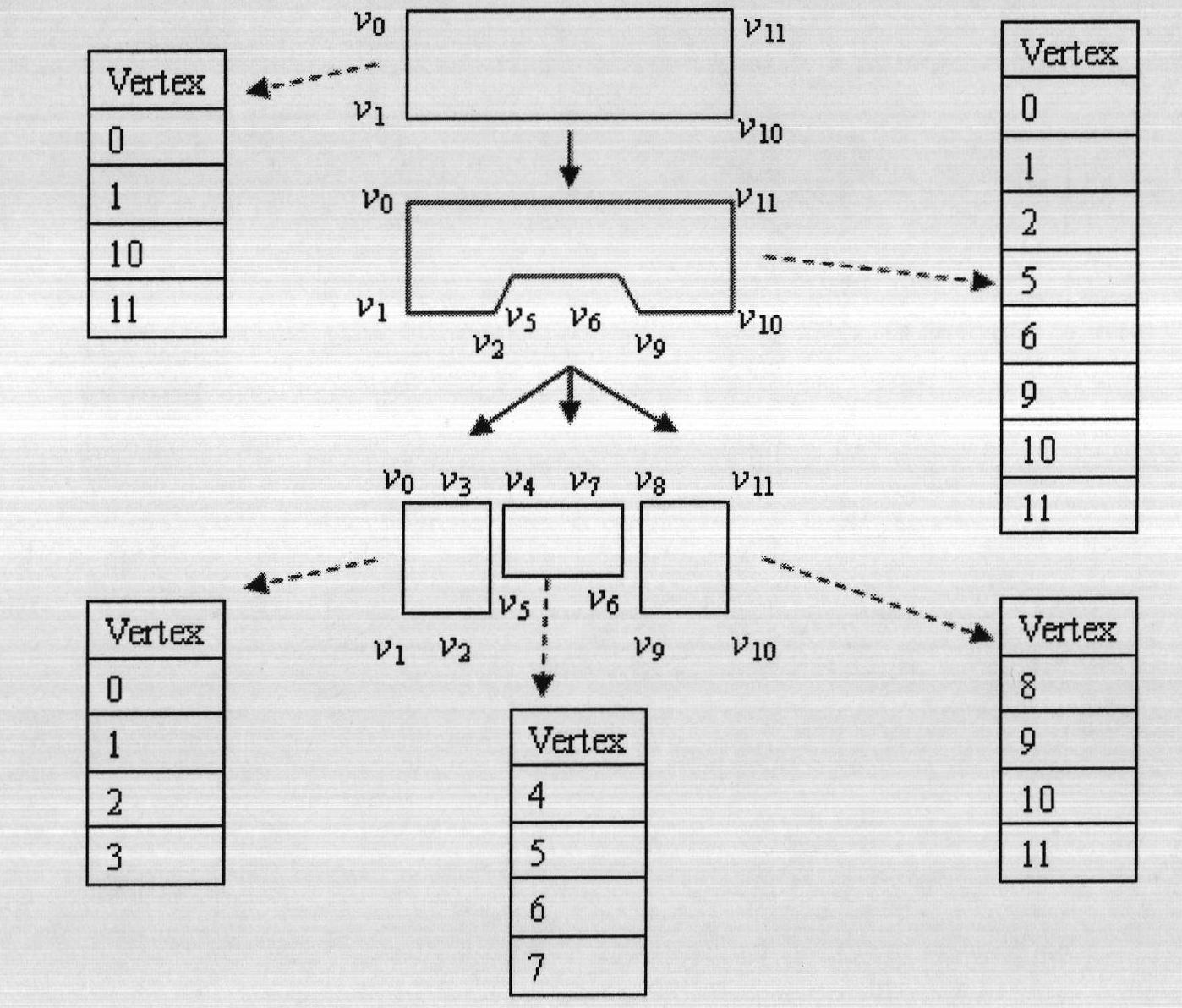Real-time three-dimensional visualization method of large-scale scene city building based on spatial cognition
A technology of spatial cognition and large scenes, applied in the field of spatial information, can solve the problems of increased data volume, reduced transmission and display efficiency, and inability to effectively improve the speed of visualization
- Summary
- Abstract
- Description
- Claims
- Application Information
AI Technical Summary
Problems solved by technology
Method used
Image
Examples
Embodiment 1
[0154] The implementation was carried out on a computer with 3.00GHz Intel(R) Pentium(R) 4 CPU, 2GB RAM, ATI mobility radeon X300 graphics card.
[0155] Firstly, the clustering results using proximity distance and Euclidean distance are compared. Figure 5 (a) is the original building polygon, which contains 37 buildings, and the depth of the compressed layers is expected to be int(lg(37) / 1.5); Figure 5 (b), (c), and (d) are the clustering results when the proximity distance is used as the clustering criterion, and the degree of merging gradually increases in turn; Figure 5 (e), (f), and (g) are simplified results using Euclidean distance as the distance factor. It can be seen from the comparison that the present invention adopts the proximity distance, better takes into account the direction of the building group and the similarity between buildings, and better preserves the road information.
[0156] Aiming at the efficiency of architectural simplification, the present ...
PUM
 Login to View More
Login to View More Abstract
Description
Claims
Application Information
 Login to View More
Login to View More - R&D
- Intellectual Property
- Life Sciences
- Materials
- Tech Scout
- Unparalleled Data Quality
- Higher Quality Content
- 60% Fewer Hallucinations
Browse by: Latest US Patents, China's latest patents, Technical Efficacy Thesaurus, Application Domain, Technology Topic, Popular Technical Reports.
© 2025 PatSnap. All rights reserved.Legal|Privacy policy|Modern Slavery Act Transparency Statement|Sitemap|About US| Contact US: help@patsnap.com



